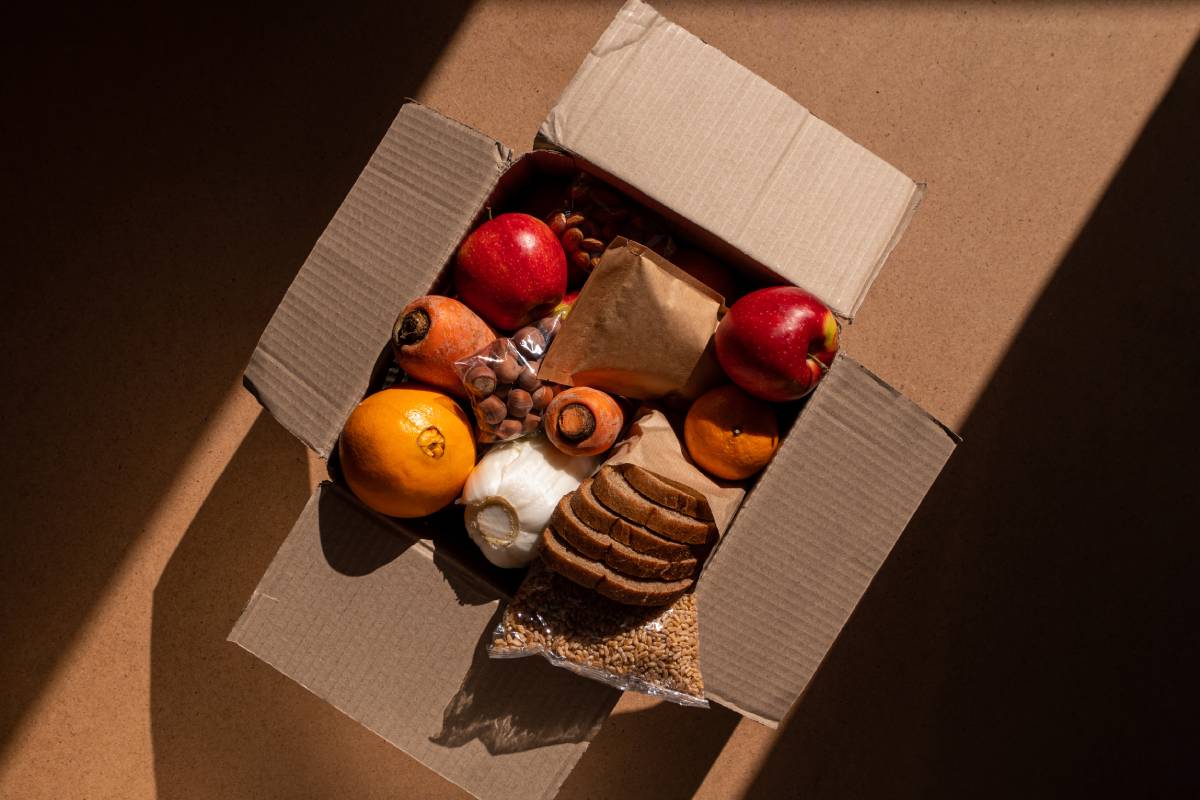Food choices have a powerful impact—not only on our health but also on the environment. However, a large portion of the food produced never actually gets consumed. According to the U.S. Department of Agriculture, between 30% and 40% of the nation’s food supply is wasted each year. That equates to roughly 133 billion pounds of food and an economic loss of over $161 billion.
This issue is not unique to the U.S. Similar patterns can be seen globally, especially in developed nations where the convenience of over-purchasing food leads to high household waste. Food loss occurs at every stage of the supply chain—from farm to fork. Whether due to spoilage during transportation, rejection of imperfect produce, or simple overbuying by consumers, edible food ends up in the bin.
Beyond wasting food, we also waste the energy, water, labour, fertiliser, and land used to grow and transport that food. Luckily, small changes at the household level can collectively make a big difference. Below are seven simple but impactful ways you can reduce food waste right in your kitchen—and help contribute to a more sustainable food system.
1. Take an Inventory Before Shopping
Before heading to the grocery store, take a quick inventory of your pantry, refrigerator, and freezer. Many of us buy ingredients we already have simply because we forget they’re tucked behind something else or frozen at the back of the freezer.
Doing a five-minute kitchen scan helps prevent duplication and encourages you to use what you already have. Make a habit of checking expiry dates and planning meals around food that’s close to expiring. This proactive step can significantly reduce how much you throw away each week.
2. Create a Weekly Meal Plan
Meal planning is one of the most effective tools for cutting down food waste. Not only does it streamline your grocery shopping, but it also ensures that every item purchased has a purpose. Plan out at least 3–5 meals each week and write down what you’ll need for each.
Try to design meals that use overlapping ingredients. For instance, if you’re buying a bunch of spinach for one dish, find another recipe where you can use the rest—maybe a smoothie, salad, or omelette. Avoid recipes that call for obscure items you may not use again. If you do need a speciality ingredient, consider whether it can be repurposed in another dish.
3. Save and Eat Leftovers (Safely!)
Leftovers often go to waste simply because people forget about them, or they’re stored improperly. To avoid spoilage:
-
Label leftovers with the date before storing them in the fridge or freezer.
-
Consume refrigerated leftovers within three days.
-
Freeze what you can’t eat right away.
-
Keep your fridge organised so you can easily see and access food before it expires.
Make leftovers more enticing by using them in a new way. Roasted vegetables from dinner can go into a breakfast hash or wrap. Cooked meats can be turned into tacos, sandwiches, or soup.
4. Store Food Properly
Many fruits and vegetables get tossed simply because they weren’t stored correctly. Understanding how to store produce can extend its life and save you money. Here are a few common guidelines:
-
Greens: Wrap in paper towels and place in a plastic container or zip bag inside the crisper drawer.
-
Tomatoes and bananas: Keep on the counter, away from direct sunlight.
-
Potatoes and onions: Store in a cool, dark, well-ventilated area—but not together, as they make each other spoil faster.
-
Herbs: Place in a jar of water, like flowers, and cover loosely with a plastic bag.
You can also freeze certain produce (like berries, bananas, spinach, or bell peppers) if you think you won’t use them in time. This helps reduce waste while giving you ready-to-use ingredients for smoothies, soups, and stir-fries.
5. Buy “Ugly” Produce
Don’t judge fruits and vegetables by their appearance. Produce that looks slightly misshapen or has minor blemishes is usually just as nutritious and delicious as its “perfect” counterparts.
Many retailers and farmers markets offer discounts on imperfect produce. Some companies even offer subscription boxes filled with “ugly” fruits and vegetables delivered to your door. This helps reduce waste at the farm and wholesale level, where these items are often discarded before they even hit supermarket shelves.
Supporting these services also helps farmers earn money for produce that might otherwise go to waste. Just remember to avoid produce that is already mouldy, leaking, or spoiled.
6. Start Composting at Home
Not all food scraps are avoidable. Peels, stems, coffee grounds, and eggshells are inevitable byproducts of cooking—but they don’t have to go to waste. Composting is a great way to turn kitchen scraps into nutrient-rich soil for your garden or indoor plants.
If you have a backyard, you can start a compost pile or bin. But even if you live in a small apartment, there are plenty of indoor composting solutions available. For instance, electric food waste composters are becoming increasingly popular in modern households. These compact appliances can sit right on your kitchen counter and convert food scraps into compost in a matter of hours. They reduce the smell, require minimal effort, and are ideal for those with limited space.
Many cities also offer community compost programs or drop-off points. Check to see what’s available in your area.
7. Get Creative with Leftovers and Scraps
Instead of throwing away leftover or less-than-perfect food, challenge yourself to find creative ways to use it. Here are a few ideas:
-
Vegetable scraps and peels: Use them to make homemade broth. Simply boil with herbs and water, then strain and store.
-
Soft apples or berries: Cook them into oatmeal, blend them into smoothies, or turn them into a fruit compote.
-
Stale bread: Perfect for croutons, bread pudding, or French toast.
-
Slightly wilted greens: Add to soups, stews, or stir-fries.
-
Mashed potatoes: Can be repurposed into potato pancakes or shepherd’s pie.
If you need inspiration, try the following basic soup recipe that helps use up almost anything in your fridge:
Basic “Anything Goes” Vegetable Soup Recipe
Makes 4–6 servings
Ingredients:
-
1–2 pounds of fresh or frozen vegetables
-
Aromatics like 1 onion, 2 garlic cloves, or 1 leek
-
1–2 tbsp olive oil
-
4–6 cups of low-sodium broth
-
Seasonings (e.g., pepper, cumin, chili powder, ginger, basil, oregano, bay leaf)
-
Optional add-ins: cooked pasta, rice, quinoa, beans, or leftover meat
Instructions:
-
Heat oil in a large pot over medium heat. Sauté your aromatics for about 5 minutes until soft and fragrant.
-
Add your chosen vegetables (except delicate greens like spinach) and sauté until slightly softened.
-
Add spices and herbs to bring out flavour.
-
Pour in broth and bring to a boil. Lower the heat, cover, and let simmer for about 30 minutes.
-
Add any delicate greens in the last 5 minutes of cooking.
-
You can leave the soup chunky or blend it for a creamy texture. For added creaminess, stir in beans, coconut milk, or plain yogurt before blending.
-
Reheat and serve. Add extras like leftover pasta or shredded chicken for extra heartiness.
This soup is incredibly forgiving and allows you to use whatever you have on hand, reducing waste while also saving money.
Final Thoughts: Reducing Waste Starts at Home
Reducing food waste in the kitchen isn’t just a matter of saving money—it’s an environmental responsibility. Every item we throw out has a cost that goes far beyond our wallets. With just a few mindful changes to your habits—such as planning meals, storing food correctly, composting scraps with electric food waste composters, and creatively using leftovers—you can significantly lower your household’s food waste output.
Small efforts, when practised consistently, can lead to big results. Whether you’re a seasoned home cook or just starting to learn your way around the kitchen, there’s always room to improve how we use and respect the food we buy.
By making these changes in your kitchen, you not only contribute to a healthier planet but also cultivate a more efficient, budget-friendly, and sustainable lifestyle.



